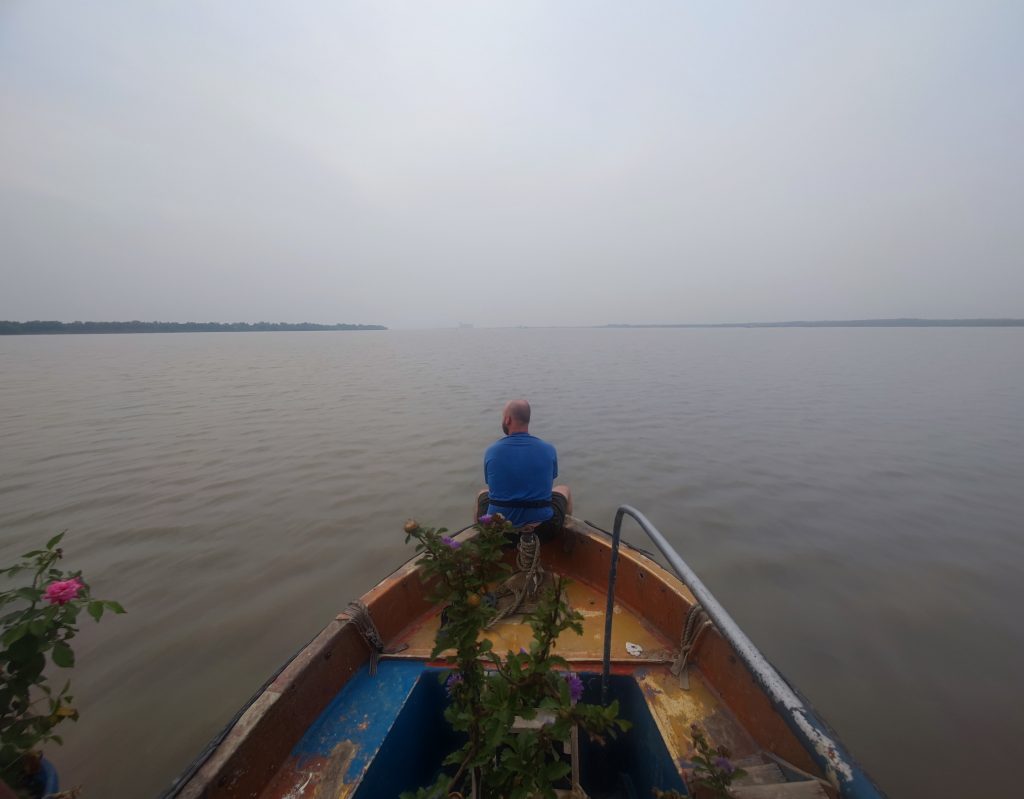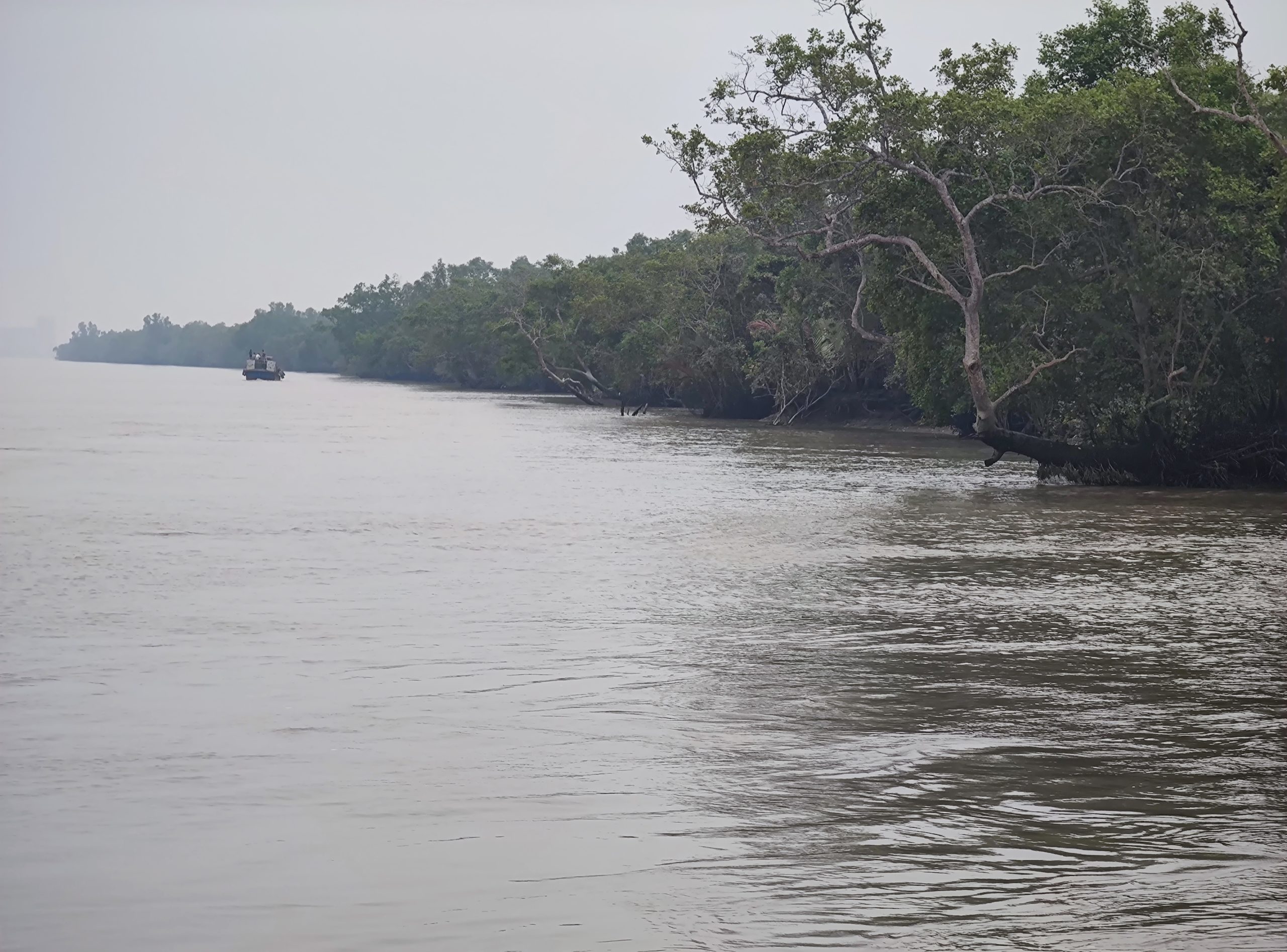
The Sundarbans
Home of Bengal Tiger – the Sundarbans!
The Sundarbans is the largest mangrove forest in the world, covering approximately 10,000 square kilometers! This vast mangrove forest area is located in the southwestern part of Bangladesh and extends into the eastern part of India. The confluence of the Ganges, Brahmaputra, and Meghna Rivers in the Bay of Bengal forms this mangrove area. The Sundarbans is one of the world’s most renowned and ecologically significant regions! It is characterized by a unique ecosystem where saltwater and freshwater mix, creating a biodiverse environment.
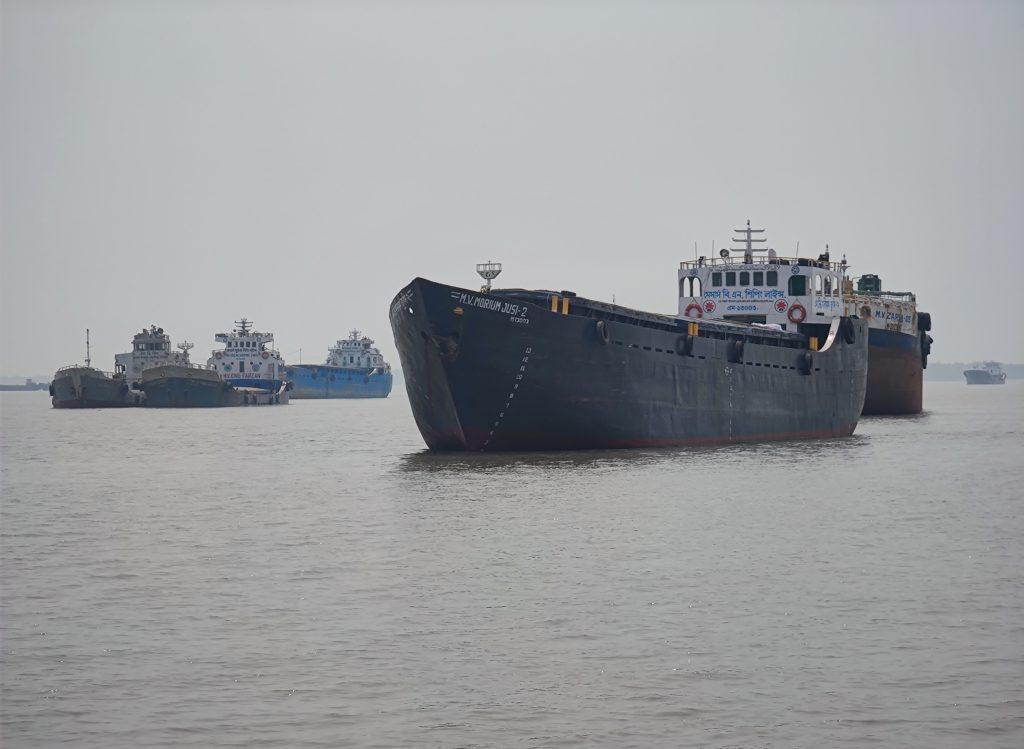
A diverse range of wildlife, including the Bengal tiger – one of the region’s most iconic inhabitants – live here. There are other cats as well like jungle cat, leopard cat and fishing cat!
Other wildlife includes saltwater crocodiles, various species of deer, monkeys, and numerous bird, fish, and reptile species.
Humans have lived in the area of Sundarbans even 4th-2nd century BCE. Local communities who live in small villages depend on the forest for their livelihoods. Fishing, honey collection, and wood harvesting are some of the main activities.
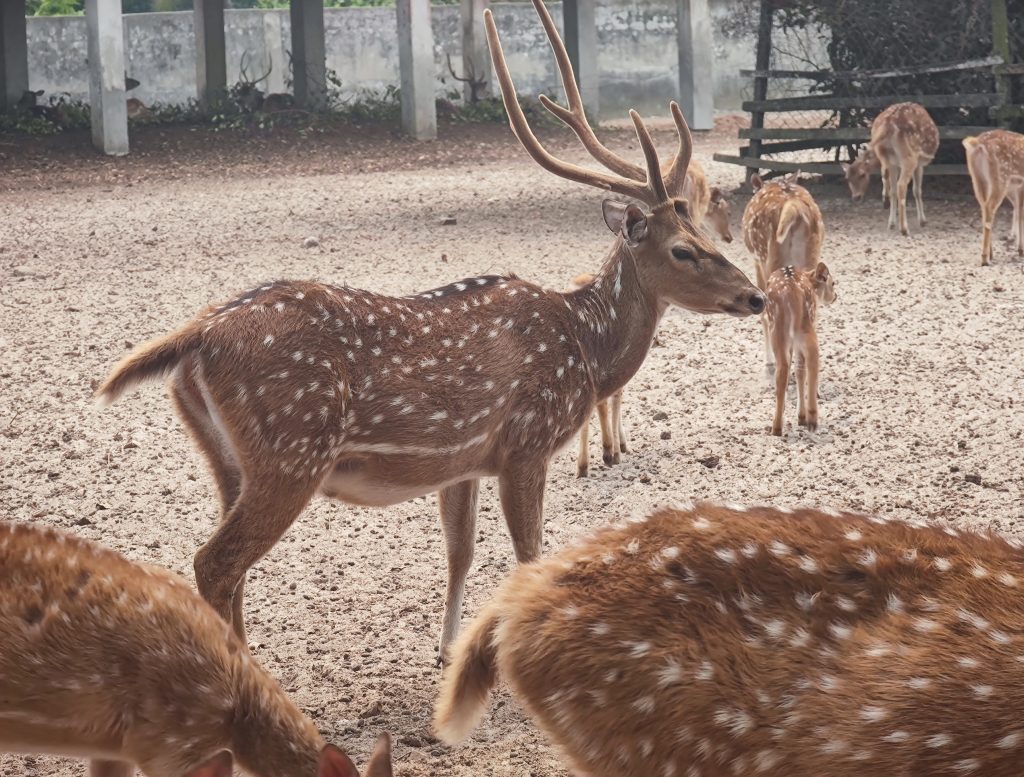
The Sundarbans in Bangladesh and India have been designated as a UNESCO World Heritage Site to protect their unique ecosystems and wildlife. But, despite preservation commitments, this area is under threat from both human and nature-caused disasters.
There are cyclones damaging the Sundarbans, and rising sea water is reducing the freshwater supply.
And even if Sundarbans function as a protective barrier for the local people against floods, the same Bengalis cause damage to this place. For example, a coal-fired Rampal power station is just north of the Sundarbans, and the government of Bangladesh sees no harm from the power plant to the Sundarbans. With money comes power, and nature is just “something that doesn’t refer to us”, right? There had been an oil tanker accident because of which oil spread around hundreds of square kilometers in the Sundarbans. Up to this day, the Sundarbans haven’t been cleaned from it.
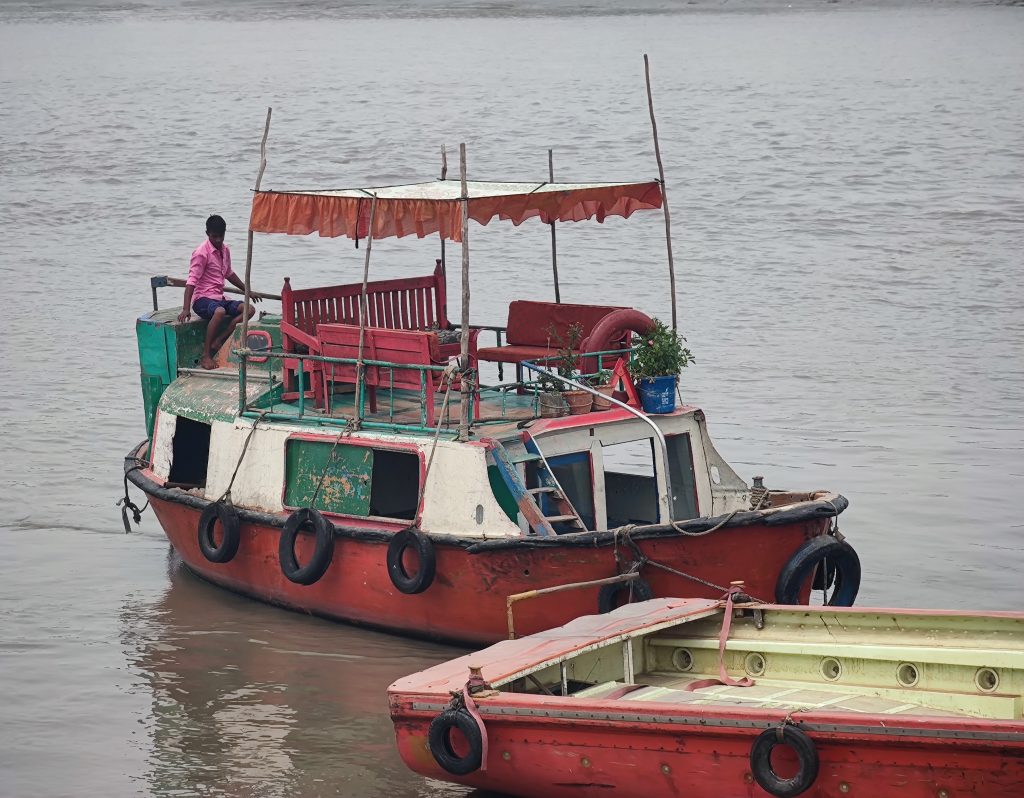
How to get to the Sundarbans?
First, you will need to go to the city of Khulna. There, ask your hotel staff or locals to point you to the bigger bus station (we’d rather call it a bus stopping area as there is no station as such, just a simple small window to purchase the tickets which anyways can be bought from the bus driver himself).
At the bus station, take the bus to Mongla. There are several buses from Khulna to Mongla – the place you need to start your Sundarban experience from.
So… Get to Khulna, then get to Mongla. And then the fun part starts.
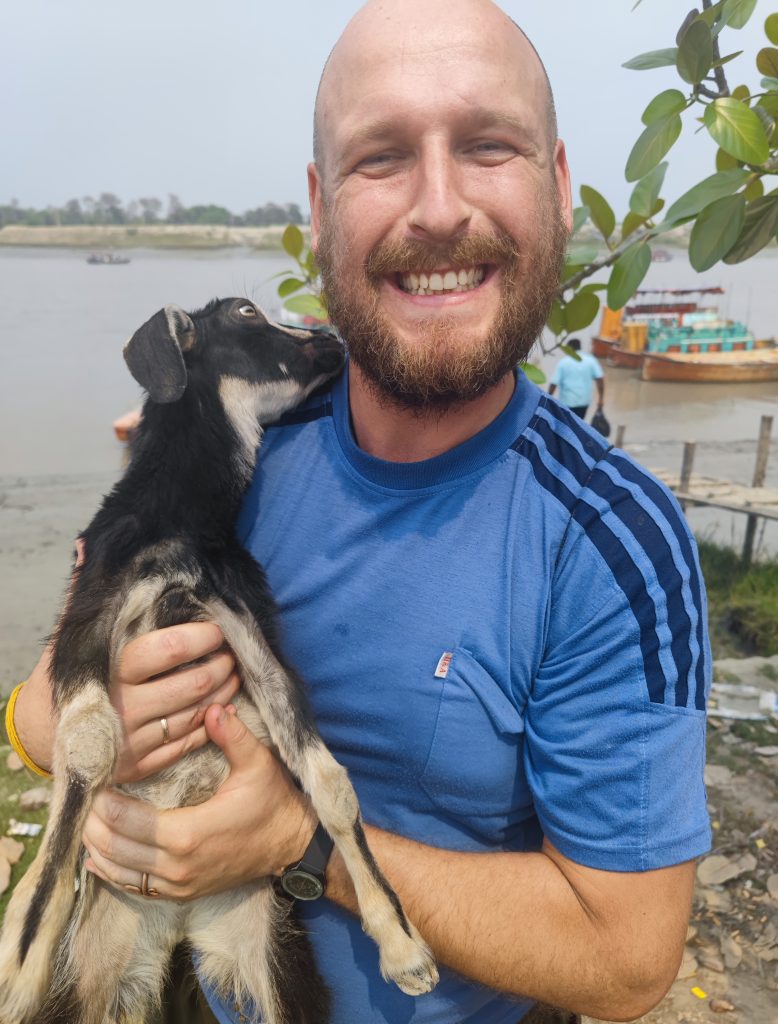
From the very first step outside the bus, you’ll be surrounded by boatmen trying to get you in their boat, and offering super-expensive tours. Generally, the boats leave from Mongla Ferry Ghat. There you will be able to find different types of engine boats, suitable for 5 to 30 people. The daily rent of the boat varies from BDT 1,500 – 3,500. But, of course, as a foreigner, you might be asked for a higher price. Don’t give in! Just like in the rest of Bangladesh, you’ll have to sharpen your bargaining skills. Boatmen do not want a foreigner to jump in a boat together with locals to share the price. But we did. At first, there was a huge fight between the strangers who offered us to join them and the boatmen – just because they thought Bengalis were taking “their tourist profit” away. Of course, there are also super-expensive tours but for a day ride you shouldn’t pay more than USD 20 per person, we paid this amount for both of us because we shared the boat with the other four men.
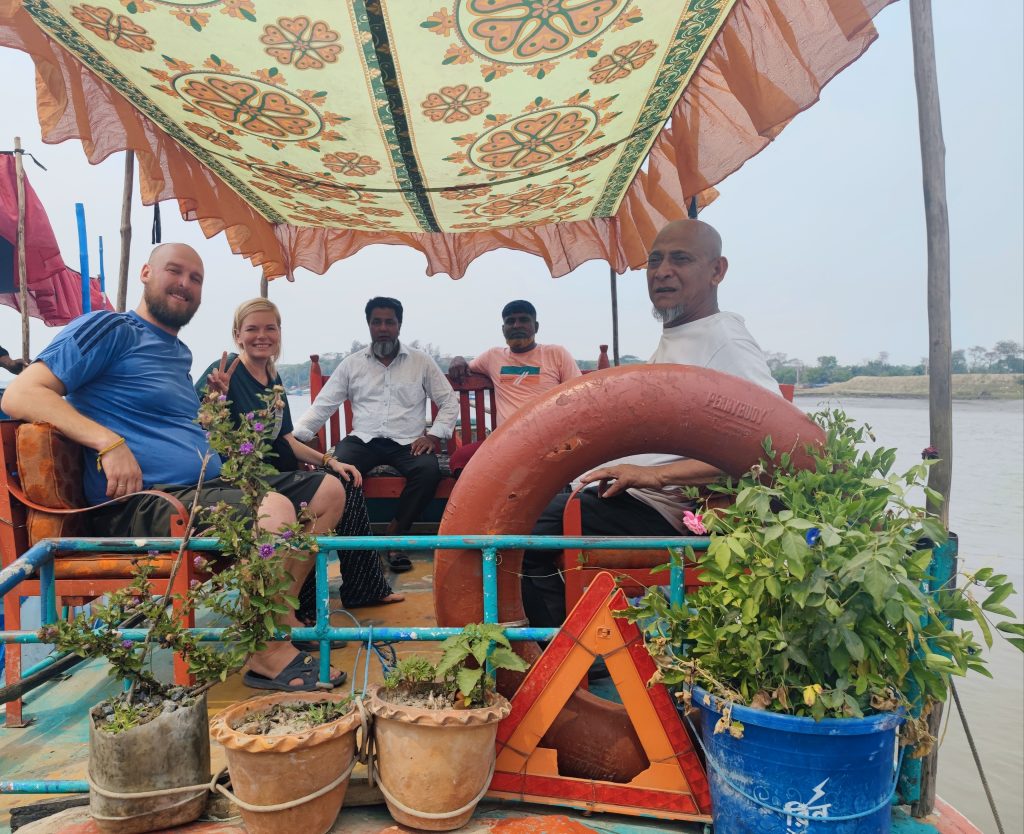
In the Sundarbans.
You’ll be offered to go to either one or two places within the Sundarbans. The first one is Koromjol (or Karamjol) Terminal. To go there and back you’d need a half day. You as a foreigner will pay BDT 320 entrée fee (ten times more than locals do). You’ll step out of the boat, and follow the trail which will lead you past a deer garden, and crocodile cages, then inside the forest where monkeys play, up to the viewing tower. One hour is enough for the walk.
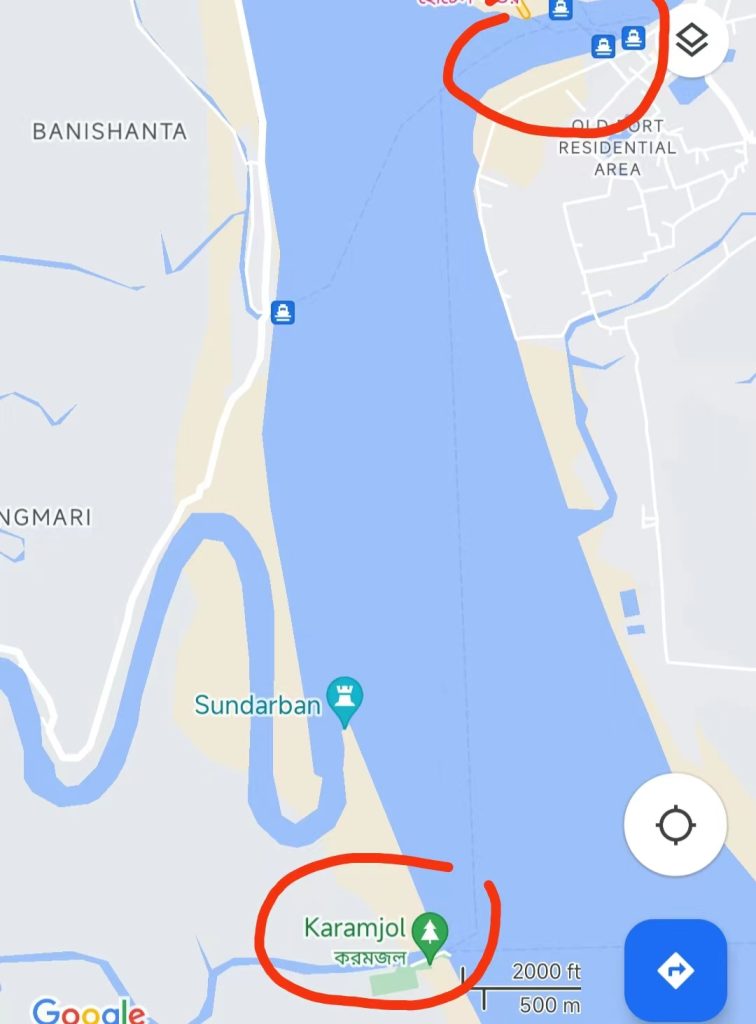
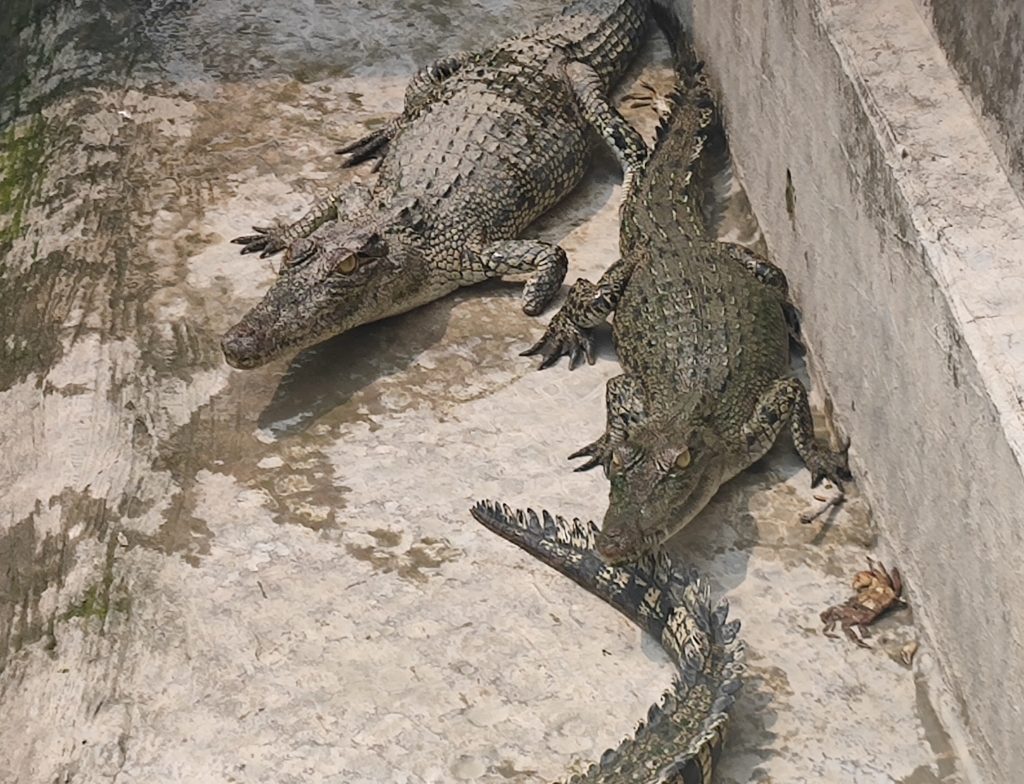
The second and the last stop for you (if you choose a day tour) will be Harbaria. And it is very, very far from the first stop. The boat ride is nice, you’ll see the same oil tankers and huge ships going in the river. If you are lucky, you’ll spot animals on the coast. No, we didn’t see the Bengal Tiger, unfortunately. But it’ll be a 2-3 hour ride, so be ready for this.
Here you’ll pay BDT 1,000 plus 15% tax. If you agree not to take the ticket or receipt, you will skip paying tax. But also – your money won’t go to the development of the forest but straight into the guard’s pocket. You will also need to pay for your bodyguard. It’s compulsory! The guy with a gun will follow you to be sure no foreigner dies in the forest trails which are very short ones. Very short for the price. Plus, you will need to ride those three hours back to Mongla Ghat after.
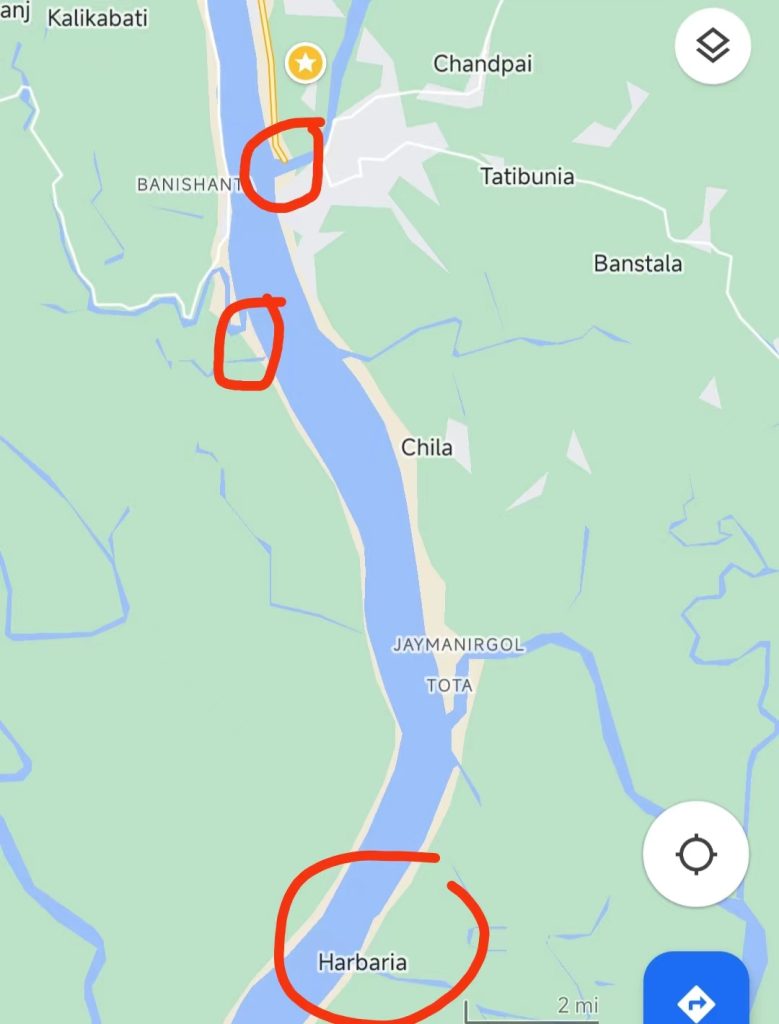
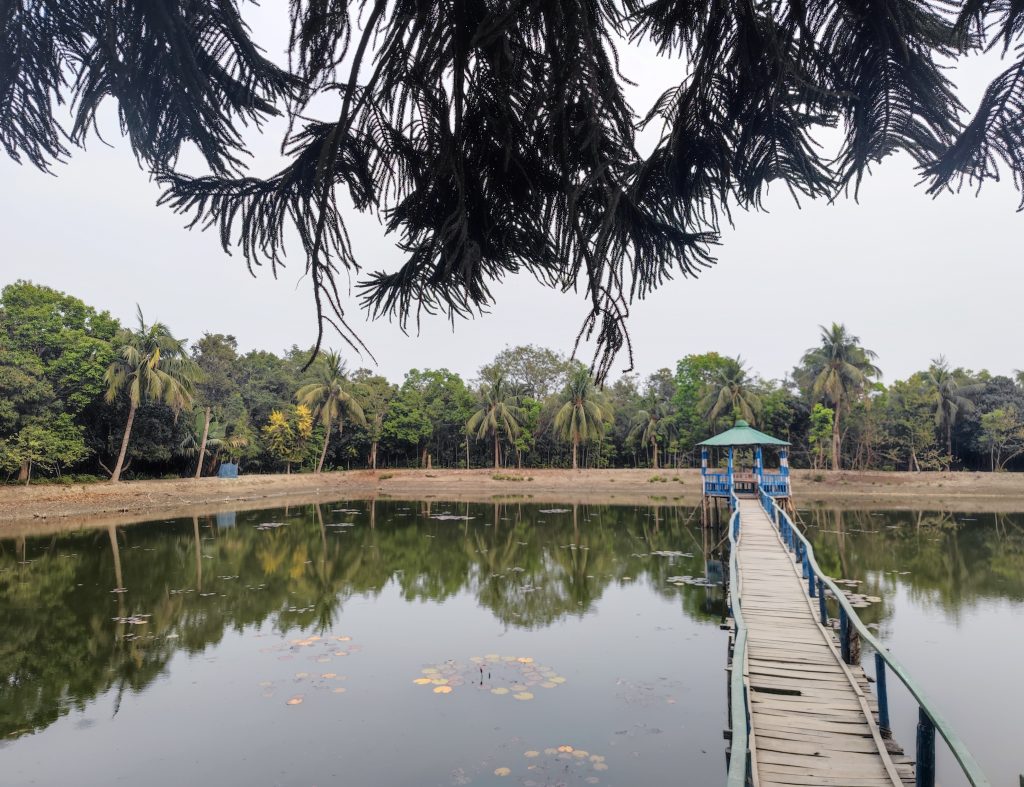
Our final thoughts?
Well, it just didn’t seem worth the effort, the bargaining, the time, and the money spent. It was just “average”. Okay, if we did it again, we’d maybe go for the first boat stop – Koromjol (or Karamjol) Terminal just to experience a little more of Bangladesh which is generally a little complicated and challenging country, as was this journey. It’s best for adventure seekers! Enjoy!
